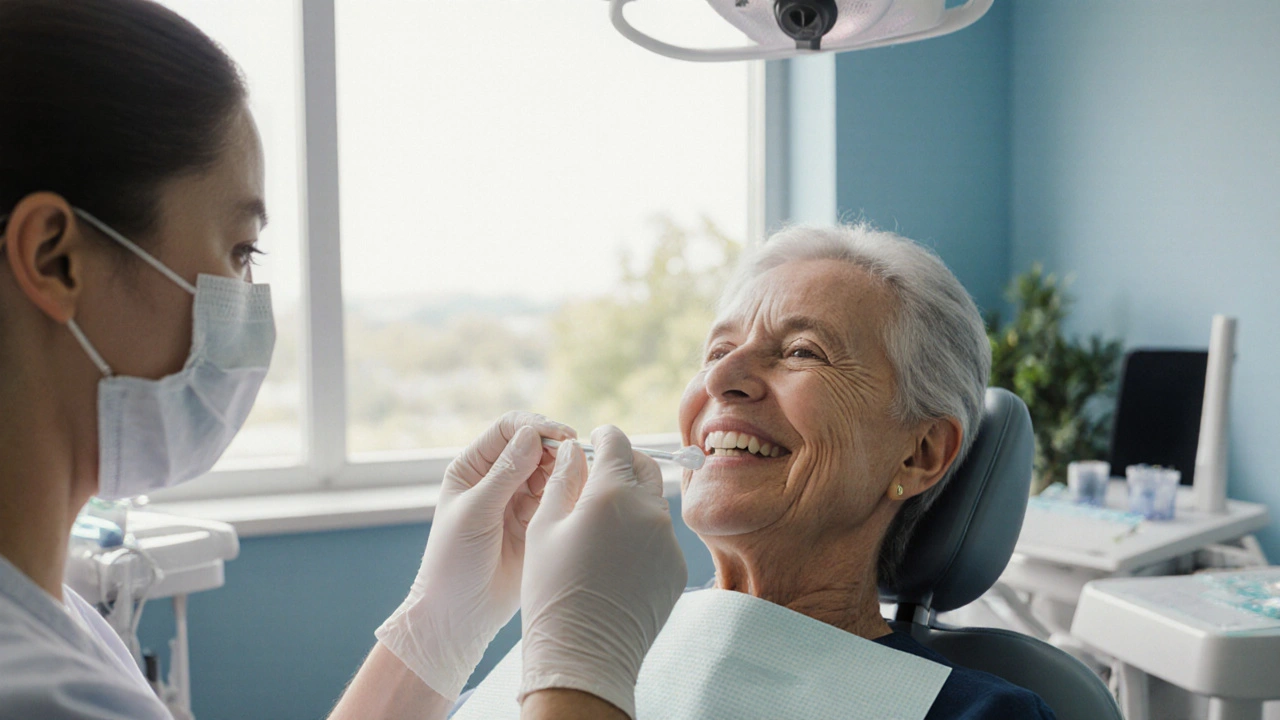Oral Health Essentials: Keep Your Smile Strong Every Day
Did you ever wonder why some people seem to have perfect teeth without pricey treatments? The secret is simple habits you can start right now. Good oral health isn't about expensive gadgets; it’s about daily choices that protect teeth and gums.
Basic Daily Routines That Really Work
First, brush twice a day for two minutes. Use a soft‑bristled brush and a fluoride toothpaste. When you brush, aim the bristles at a 45‑degree angle to the gum line – that’s where plaque loves to hide. Flossing may feel odd at first, but a quick pass between each tooth removes debris a brush can’t reach. If floss feels tricky, water flossers are a handy alternative.
Rinse with an alcohol‑free mouthwash after brushing. It helps reduce bacteria and freshens breath without drying out your mouth. Remember, a dry mouth is a breeding ground for decay, so sip water throughout the day, especially after meals.
Spotting Common Problems Early
Bleeding gums when you floss? That’s often early gum inflammation. Don’t ignore it – gentle brushing and consistent flossing usually calm it down. If bleeding persists, a dentist check‑up is worth the visit.
Tooth sensitivity to hot or cold drinks can signal worn enamel or exposed roots. Switching to a toothpaste designed for sensitivity and avoiding very acidic foods can ease the pain. Persistent sensitivity should be evaluated by a professional.
Bad breath that sticks around despite brushing? It could be food stuck in hard‑to‑reach spots or an underlying gum issue. Cleaning the tongue with a soft scraper and staying hydrated often clears it up.
Finally, keep an eye on any changes in color or shape of your teeth. Dark spots may be early signs of decay, while cracks need prompt attention to prevent infection.
Maintaining oral health also means limiting sugary snacks and drinks. Bacteria love sugar, and each bite fuels acid that erodes enamel. If you indulge, rinse with water afterward to wash away sugar residues.
Regular dental visits, usually every six months, let professionals catch issues before they become painful or costly. A quick cleaning removes hardened plaque (tartar) that brushing alone can’t handle.
In short, a healthy mouth starts with consistent brushing, flossing, and mindful eating. Pair those habits with routine dental check‑ups, and you’ll keep cavities, gum disease, and bad breath at bay. Your smile will thank you, and you’ll spare yourself a lot of hassle and expense.

How Prophylaxis Improves Life for Dry Mouth Syndrome Patients
Discover how targeted prophylaxis can protect teeth, reduce infection, and improve comfort for those with dry mouth syndrome. Learn practical steps, compare treatments, and find tips to build an effective prevention plan.
